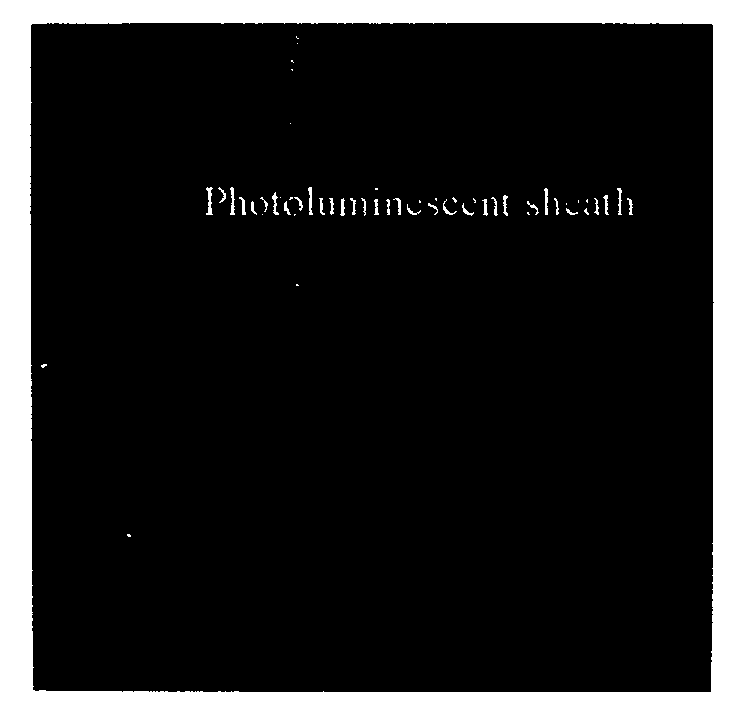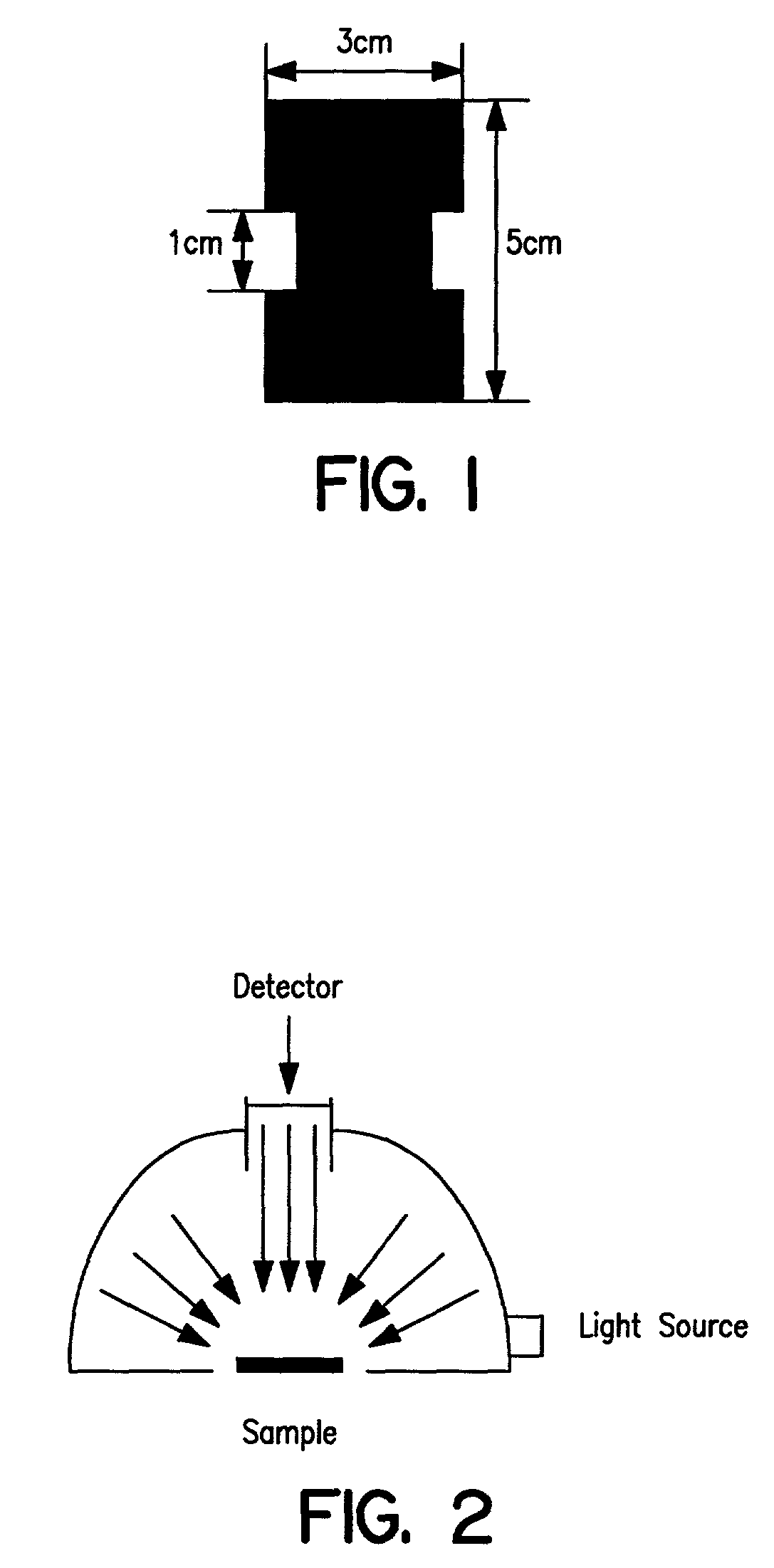Photoluminescent fibers and fabrics with high luminance and enhanced mechanical properties
- Summary
- Abstract
- Description
- Claims
- Application Information
AI Technical Summary
Benefits of technology
Problems solved by technology
Method used
Image
Examples
Embodiment Construction
[0036]A number of polymers were selected and various geometries were produced in a conjugate bicomponent fiber spinning system. Mechanical properties as well as photoluminosity of the fibers were evaluated in an effort to optimize photoluminescence without sacrificing fiber mechanical properties.
I. Materials Used in Testing
[0037]A number of test samples were produced. The components containing photoluminescent pigments were prepared according to the procedures outlined in U.S. Pat. No. 5,914,076. Specifically, the pigments are compounded into the base polymer. The pigments are first ground to achieve the required uniform small distribution, and are then added and mixed with the base polymer pellets, melted, extruded, cooled and chopped into pellets.
[0038]The first sample set consisted of a series of sheath / core fibers with the photoluminescent polymer being placed in both sheath in one and in the core in another. Details are given for sample set 1 in Table 2 below.
[0039]
TABLE 2The C...
PUM
| Property | Measurement | Unit |
|---|---|---|
| Length | aaaaa | aaaaa |
| Luminance | aaaaa | aaaaa |
| Fraction | aaaaa | aaaaa |
Abstract
Description
Claims
Application Information
 Login to View More
Login to View More - R&D
- Intellectual Property
- Life Sciences
- Materials
- Tech Scout
- Unparalleled Data Quality
- Higher Quality Content
- 60% Fewer Hallucinations
Browse by: Latest US Patents, China's latest patents, Technical Efficacy Thesaurus, Application Domain, Technology Topic, Popular Technical Reports.
© 2025 PatSnap. All rights reserved.Legal|Privacy policy|Modern Slavery Act Transparency Statement|Sitemap|About US| Contact US: help@patsnap.com



